Water mains are pipes of large diameter used to carry potable water from the Water Authorities reservoirs of treated water, to the town or district where it is needed.
Trunk mains, which may be as much as 610mm in diameter, carry the water in bulk and often over long distances to the built-up areas. They then split up into smaller mains and sub-mains, which run beneath the streets and side streets.
The work of laying these mains is highly specialised, and is done only by the trained mainlayers employed by the Water Authority. However, the plumber is also involved in the work, since he must arrange for a suitable connection to be made to the main he can connect a cold water supply to any building.
The Water Authority will usually do the actual tapping of the main and insert the ferrule, but the plumber will be responsible for the service connection to the tapping ferrule, and will have to be on the spot when the work is done. Also, he might be called upon to install smaller diameter mains, for fire fighting services and extensions to mains within the bounds of a large new building.
The water mains supplying the town or district may be in the form of a grid.
This provides a ring circuit and each section can be isolated.
A special machine designed to cut into large diameter distribution mains pipes while the water is still in the pipe and under pressure. Before putting the machine in position, the body of a closed SCREW-DOWN FERRULE, with the jointing medium applied to the thread, is fixed into the base of one of the spindles in the headgear of the machine and combined drill and tap in the other (see sketch). The head is lifted on to the pipe and clamped down with a chain sealing off its base with a rubber or leather washer. The ratchet handle is fitted to the spindle with the drill and operated, simultaneously the drill/tap pressure adjusting screw is wound down slowly, this cuts a hole and threads it at the same time into the pipe.
Upon completion the ratchet is reversed and the drill is wound up; note water can now flow into the headgear but no further. By a special design the headgear can now be rotated 180º to align the ferrule with the hole just drilled and tapped. The ratchet handle is fitted to the ferrule spindle and operated, thus tightening the ferrule into the tapping. When the machine is removed from the pipe only the water in the headgear falls to the ground, the connection made seals the pipe. The other component parts of the ferrule are assembled and the pipe is run to a convenient position for an outside stopcock. This section of pipework is known as the communication pipe. When the connection is completed the screwdown ferrule is simply opened using a special key.
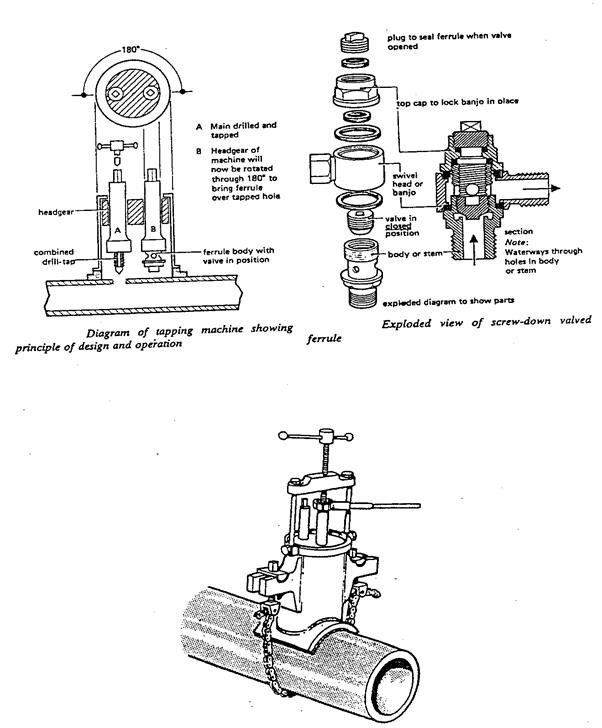
Local Authorities run water mains from their storage reservoirs to most premises except those in very isolated areas. Water mains are constructed of asbestos cement, PVC or cast iron and are buried to great depths depending upon local conditions but they must have a minimum cover of 900mm beneath roads and 750mm elsewhere in order to prevent damage owing to settlement and/or frost.
These have been used with safety for conveying water which could corrode iron pipes. It can be manufactured in various thicknesses and can withstand the same internal pressures as cast iron pipes. Owing to the much lower mechanical strength of asbestos, special cladding devices are necessary when making service connections.
Polyvinyl chloride is now becoming more widely used and has sufficient thickness and strength to enable connections to be made.
Cast iron mains are by far the most commonly encountered and time has proved them to be the most satisfactory. The only real problem is their susceptibility to deterioration in certain corrosive soils, but this can be overcome by taking protective measures.
The section of pipework from the water main to the Local Authority stopcock is known as the communication pipe and is connected to the ferrule by means of a goose neck bend. A goose neck is a curve or bend which is purposely put into the communication pipe to allow for ground movement. The pipe from the stopcock to the house is known as the service pipe.
Where the underground pipe passes through the walls or floors of the house it should be sleeved. Both ends of the sleeve should be sealed with mastic to prevent the entry of vermin etc into the house.
The first fitting on the service pipe is the stopcock which allows the householder to control the flow of water into the premises. The pipe from this point on is usually referred to as the rising main, and if possible should be fixed to an internal wall to prevent frost damage. If, however, the rising main has to be run on an external wall it should be well insulated.
In districts where the mains supply is capable of delivering adequate quantities of water at good pressure, the Water Authority may permit a district system of supply to all buildings.
All pipes to the cold drew off points are taken directly from the rising main. There is therefore no risk of possible contamination that may occur when water is stored within the premises.
Figure 1 shows a suitable installation for the average dwelling, supplying a sink, WC, wash basin, bath and cold feed cistern. The capacity of this cistern should be 135 litres.
In some areas the cold water supply is provided by use of the indirect system – see figure 2. This means that the service pipe rinses through the building to the cold water storage cistern and only one draw off point for drinking purposes is permitted. The remaining cold water draw off points are supplied from the storage cistern. The capacity of this cistern should be 227 litres.
The Local Authority regulations on quantities of water stored are based on a 24 hour period. The table below outlines the minimum storage requirements as outlined in the Dublin Corporation Regulations.
Advantages
Disadvantages
Advantages
Disadvantages
The following table lists the minimum water storage for domestic purposes, etc.
Dwelling house (up to 3 bedrooms) |
136 litres |
(30 gals) for cold only |
Dwelling house (up to 3 bedrooms) |
227 litres |
(50 gals) for hot and cold |
Dwelling house (4 bedrooms and over) |
363 litres |
(80 gals) for hot and cold |
Dwelling house (having 2 bathrooms) |
682 litres |
(150 gals) for hot and cold |
Factory |
45 litres |
(10 gals) per head |
Flats (bedsitters with communal bathrooms) |
90 litres |
(20 gals) per head |
Flats (self-contained) |
227 litres |
(50 gals) per flat |
Hospitals, maternity per bed |
455 litres |
(100 gals) |
Hospitals, general bed |
227 litres |
(50 gals) |
Hospitals, laundry, per bed, plus staff |
136 litres |
(30 gals) |
Hospitals, staff on duty |
45 litres |
(10 gals) per head |
Hospitals, nurses home and medical quarters |
136 litres |
(30 gals) per head |
Hotels |
227 litres |
(50 gals) per head |
Hotels (having bedrooms with private bathrooms) |
1,045 litres |
(230 gals) per bedroom |
Offices |
45 litres |
(10 gals) per head |
School, day, boys |
23 litres |
(5 gals) per head |
School, day, girls |
36 litres |
(8 gals) per head |
School, boarding |
113 litres |
(25 gals) per head |
Restaurants and Canteens |
7 litres |
(1½ gals) per meal |
These minimum requirements do not include fire-fighting or industrial needs. It is not possible to formulate precise requirements for all types of buildings owing to the variety of fittings and the number of occupants, even between buildings of a similar type. It is therefore important to ensure that adequate storage is provided in all cases.
In domestic plumbing installations, the cold water storage cistern is usually located in the attic or roof space. The final position of the cistern is important because the weight of the water must be taken into consideration. 227 litres of water weighs one quarter (¼) of a ton, and this weigh must be distributed correctly to prevent damage to the structure of the house. To achieve this, the cistern should be located above a load-bearing wall with timber bearers beneath it. These bearers should rest on the ceiling joists and extend beyond the dimensions of the cistern.
The cistern should not be located near the eaves because of the danger of frost damage from cold winds. Ideally it should be sited close to the chimney breast, where it can benefit from the radiant heat emanating from it.
When insulating the attic, the space beneath the cistern should not be insulated. This will allow warm air in the form of convection currents to rise from below.
A cistern is an open topped designed to hold a supply of cold water, which will have a free surface subject only to the pressure of the atmosphere. It should be fixed as high as possible to give adequate pressure flow. A storage cistern is designed to hold a reserve of water to supply the fixtures and fittings located below it.
The most commonly used materials which cisterns are manufactured from are listed below:
Cisterns of all types should be fitted with a well fitting cover, preferably made of the same material as the cistern. The purpose is to prevent the access of dirt and vermin to the water.
Most Water Authorities allow only one tap to be supplied direct from the rising main. Therefore, cisterns are required for cold water storage. It is unwise to drink water from a cistern, and the single tap off the rising main is to provide a supply of potable water. This tap is usually fitted at the kitchen sink.
Cisterns manufactures in galvanised mild steel have been widely used for many years. They are obtainable in many thicknesses and sizes. They are formed from black mild steel sheet, and then dipping into baths of acid to remove grease and scale. After this they are dipped into a bath of molten zinc and so coated with a corrosion resistant sink of zinc.
This protective hot-dip galvanised treatment has been developed from experiments carried out by Galvani, a scientist after whom the process is named.
During constructive the seams of the cisterns are welded, their top edges are stiffened with an angle curb and the open top corners are braced with corner plates.
They are self supporting and can be suitable and can be situated directly on timber bearers. The holes are cut by means of a tank cutter or expanding bit and the jointing done by means of a grommet, jointing paste and back nut. Nylon washers can be used as an alternative.
Where holes are cut in galvanised cisterns, it is important to remove all the swarf as failure to do this can often result in a serious corrosion of the cistern due to the electrolytic action being set up. Two coats of good quality bituminous paint on the inside of these cisterns will increase their working life considerably.
Various plastics are now being extensively used for cold water storage cisterns: Polyethylene, Polypropylene and Polyvinyl Chloride (PVC) to mention just a few. They are strong and resistant to corrosion of all types, virtually everlasting, very hygienic and light in weight. They do not cause, nor are they subject to, electrolytic corrosion, and they have low rates of thermal conductivity – so the stored water retainers its heat longer in cold weather.
These cisterns are quieter in filling that a metal cistern, and this is a useful advantage, particularly when the cistern is sited near bedrooms. Furthermore, they are easy to squeeze through small openings, which is an advantage when the cistern is to be placed in an attic or loft.
Plastic cisterns are manufactured square, rectangular, or circular in shape and are black to prevent algae growth. They must be fully supported by being placed on a solid decking.
Holes to enable pipe connections to be made are cut by circular saw cutters. The jointing is by means of plastic washers but no oil-based paste of any description must be used, because this softens the material and causes it to break down.
Plastic materials are comparatively soft, so care must be taken when handling and fixing. Sharp instruments and tools can easily cut or puncture the cistern. Naked flames and excessive heat will also damage the material.
Glass fibre reinforced plastic (GRP) is a thermosetting material and has been found satisfactory for the manufacture of cistern. It has a greater degree of ragidity than those made of thermoplastic and is suitable for the construction of large cisterns that are built up by using bolted sections.
Generally these provide over 5,000 litres storage and are made up of preformed panels. Sectional storage cisterns are generally assembled on site by specialist contractors. The remarks relating to the support and fitting of thermoplastic cisterns apply equally to those constructed of GRP.
The nominal capacity of a cistern is usually stamped or written on its side, and indicates the amount of water it would hold if filled up to the edge. In reality, the cistern will never be filled to this level.
The actual capacity refers to the amount of water measured from the base of the cistern up to the water line.
The usual capacity is the amount of water of which can be drawn off through the distribution pipe connection. This means the amount of water stored between the invert of the lowest connection and the water line.
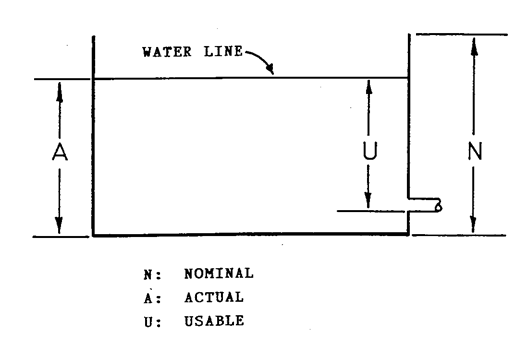
All cold water storage cisterns have the following connections:
Ball valves should be fitted as high as it practicable to gain the maximum storage of water.
The overflow pipe should be one size larger than the cistern supply pipe, and located 40mm below the ball valve connection. This is to ensure that the ball valve will never become submerged, should the cistern overflow, which would be a health hazard due to the possibility of back siphonage.
Connections for distribution pipes should be located in the storage cistern in such a way that silt cannot be drawn into the pipes. These connections are usually taken from the side of the cistern 50mm above the bottom.
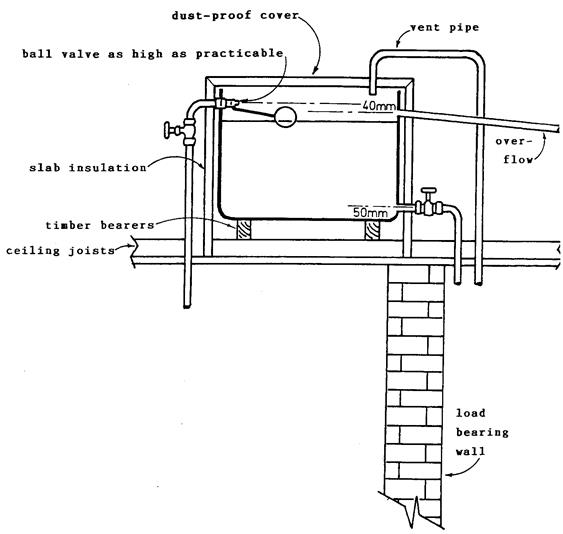
A ball valve is simply a control activated by a lever arm and a float which closes off the water supply when a predetermined level of water has been reached. Ball valves, in term of the definition above, should be called ‘Float-Operated /Valves’.
The term ‘Ball Valve’ is, however, universally applied. There are many different types and it is important to be able to recognise each, to know when and where they should be fitted.
Ball valves are classified as follows:
The visual difference between the three types of valve is in the size of the orifice (the hole through the nozzle). For high pressure water supply the orifice must be small; for medium pressure the size of the orifice will be a little larger; while for low pressure the orifice is larger still, almost full way.
The main types of ball valves are as follows:
This has the advantage of being easily dismantled or removed from the cistern in the case of malfunction, without having to undo the backnuts to remove the body. The parts are renewable and readily accessible. This is particularly important with regards to the nylon seating which can be suitable for low, medium or high pressure, thus making this type of value universal.
Nylon is a chemically inert plastics material and so has a high resistance to mechanical wear, and is now extensively used in place of metal seatings.
The movement of the piston in this type of valve is in horizontal direction and has a much smoother and better action.
Figure 2 is an exploded view showing all the components parts. It will be noted that the outlet is not threaded to receive a silencing pipe. It is now against regulations to fit these, as they may cause back siphonage.
The Portsmouth BS 1212 valve is the only ball valve approved by Dublin Corporation for controlling the flow of water on any incoming water main.
The Croydon valve is similar in many respects to the Portsmouth, with one notable exception; the movement of the piston is in a vertical direction. This tends to give the valve a rather jerky and sluggish action. The Croydon valve was used at one time, but has generally been superseded by the other types.
The Garston ball valve was developed at the Building Research Station at Garston and is sometimes referred to as the BRS valve. It is a diaphragm type ball valve and is constructed mainly of a plastic type material.
Its main advantage are as follows:
The Garston ball valve is designed specifically to use on low pressure installations.
The following figure shows a sectional view of the Garston valve and figure 2 is an exploded view.
Unlike those previously described which rely solely on the force exerted by the float to overcome the pressure of the water, these ball valves utilise the pressure of the water to help them close.
As can be seen there is a waterway through the centre of the piston, one end of which has a cup washer fitted to it, which is very similar in appearance to the type used in cycle pumps. Water passing through the hole in the piston exerts the same pressure on the cup washer (which tends to push he piston towards the orifice) as the pressure of the incoming water tends to push it off. As these pressures are equal they cancel each other out, hence the name ‘Equilibrium Ball Valve’.
The float on this type of ball valve has only to lift the arm whereas in the case of ordinary ball valves, the effort provided by the float not only has to overcome the weight of the arm but also the pressure of the water.
Equilibrium valves are used with advantage in areas where very high mains pressures exist and where persistent water hammer may be encountered. All ball valves of 50mm nominal diameter and above are of the equilibrium type. This reduces the size of the float that would otherwise be required to close the piston in an ordinary ball valve of this size.
One of the first indications of problems with a ball valve is water running from the overflow pipe. Some of the reasons for this are listed below:
Water hammer is a hammering noise which occurs in high pressures water pipes caused by surges of pressure. This is not only undesirable from the point of view of noise; it can also cause damage to plumbing systems. Water hammer usually occurs when a high pressure flow of water is suddenly arrested, as in the case of a ball valve closing too quickly, possibly due to an incorrect sized orifice. This has the effect of causing a loud bang or series of bangs throughout the pipework, and momentarily subjecting the whole system to a pressure almost double that of the incoming water. If this is allowed to persist, the excessive pressure can cause a pipe, perhaps already weakened, to start leaking.
Another fault which may generate water hammer is ripples or waves which form on the surface of the water is a cistern. It is these ripples that cause the float to bounce up and down, opening and closing the ball valve. To overcome this problem a larger float can be used, or a damping plate fitted to the float or lever arm is another alternative.
Another method of solving the problem of water hammer would be to fit an equilibrium type ball valve.
Furring can occur on the wetted moving parts of ball valves, i.e. the piston, the split pin and the lever arm. It only happens in districts where the water has a fairly high degree of temporary hardness. Water evaporates from the wetted parts, leaving behind minute particles of rock-like lime. These build up into layers which prevent the piston and lever from working smoothly. As a result the ball valve does not close easily or properly, and water leaks persistently from the overflow or warning pipe. In the case of the Portsmouth ball valve, furring can often be overcome by replacing the brass piston with one manufactured from nylon or plastic.
Cavitation is a form of erosion, brought about the mechanical wearing away of the ball valve orifice at its seating. The orifice seating becomes pitted or scored as it is gouged away by countless air bubbles which form in the water as it rushes along at high speed, and explode with sharp impingement as they leave the orifice tip. Nylon, a plastic material, is highly resistant to wear and is therefore more resistant to cavitation attack than metals are, and this is another reason why they are sometimes used in Portsmouth type ball valves.
Float-operated valves – ball valves – are the simple devices that control the water into cold storage tanks, central heating feed and expansion tanks, and WC cisterns. Like taps, they are in more or less constant use, so it’s not surprising that problems sometimes occur.
Check the chart shown below for symptoms of faults and their likely causes. Leaking overflows need urgent attention, since what starts as a tell-tale drip can quickly develop into a flood – most overflows can’t cope with full-scale flow of water (strictly speaking they are only warning pipes). The leak may also give rise to damp problems on the wall below.
Before you start a repair, identify what sort of valve you are dealing with (see below) and make sure that the shops are open – you may have to take the valve with you to get replacement parts. Don’t forget that the water will have to stay off in the meantime.
All ball valves work on the same basic principle; an air-filled float, attached to the valve via an arm, rises and falls with the water level in the tank.
Attracted to the arm inside the valve is a plunger and plastic diaphragm (diaphragm type), or a piston with rubber washer (piston type), which closes off the water supply when the level is at the right height.
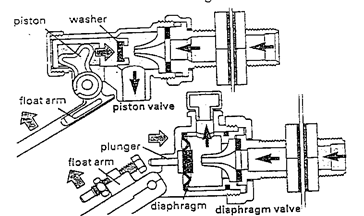
The following table displays some common ball valve faults.
Symptom |
Possible Causes |
Cure |
Valve lets water by, causing overflow |
Washer/diaphragm worn |
Service valve |
|
Seat cracked by frost |
Service valve |
|
Valve mechanism jammed due to scale |
Service valve or replace |
|
Leaking float |
Empty float and seal or replace |
|
Valve corroded due to dezincification |
Replace valve with dezincification-resistant type |
Valve won’t let water by causing tank to empty |
Valve jammed due to lack of use (very common on C.H. feed and expansion tanks |
Service valve |
Tanks slow to fill |
Valve outlet blocked with grit |
Service Valve |
|
Wrong seat or valve |
Replace seat or valve |
Extensive noise from valve as tank fills |
Wrong seat or valve |
Replace seat or valve |
|
Worn Valve |
Service or renew valve |
|
Water hammer due to high pressure |
Turn down pressure or fit different valve |
|
Float bouncing on surface water |
Fit damper to float |
‘Portsmouth’ (piston type)
For many years the standard valve on both tanks and WCs. Older all-brass versions are still common; newer models have a plastic piston and seating which is less prone to scale build-up. The water Byelaws now ban Portsmouth valves from the new installations.
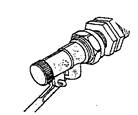
‘Croydon’ (piston type)
Rare and now obsolete. Replace with a newer type if faulty.
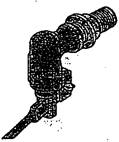
‘Brass Equilibrium’ (piston type)
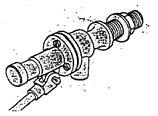 Similar to the Portsmouth, but with an extra chamber that balances the force of the water pressure rather like a canal lock – resulting in quite, smooth operation. Used in areas with abnormally high or variable water pressure.
Similar to the Portsmouth, but with an extra chamber that balances the force of the water pressure rather like a canal lock – resulting in quite, smooth operation. Used in areas with abnormally high or variable water pressure.
‘Garston’ (diaphragm type)
Scale resistant valve, usually plastic but sometimes brass, which has no moving parts in contact with the water. No tools needed for servicing.
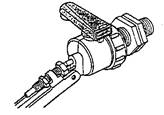
‘New Brass Diaphragm’ (diaphragm type – BS 1212 part 2)
Similar in operation to Garston, but with its water outlet mounted above the valve to eliminate the risk of back-siphonage.
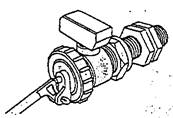
‘Torbeck’ (diaphragm type)
A patented plastic valve for WC cisterns. It has a built-in damper and a collapsible underwater outlet which permits silent filling without risk of back-siphonage. (‘Silent filling’ tubes on ordinary valves are banned under the Water Byelaws).
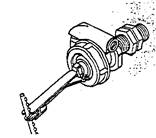
Most ball valves can be dismantled for cleaning and servicing, leaving the tail and supply pipe connection undisturbed. This is always preferable, especially if the supply pipe is lead, but it’s not worth trying to service a very old or badly scaled-up valve – replace it instead as described overleaf.
New parts – washers, seats, floats – are cheaply available from DIY stores or plumber’s merchants. But as with taps, you may need to take the old parts with you. The first step is to turn off the water supplying the valve at the nearest stopcock. Check the water has stopped flowing by pressing down on the float arm.
When unscrewing the valve body, take care not to let it turn or you’ll break the seal on the tank/WC cistern and strain the supply pipe connection.
Tools and material: Adjustable spanner, wrench, self-locking wrench, small screwdriver, pliers, PTFE tape.
After removing the working part of the valve (see step below), dismantle it following the diagram.
“Most newer ball valves have replaceable seats with the outlet holes sized according to the pressure of the water passing through them.
Low pressure seats are for WC cisterns fed from storage tanks. High pressure seats are for storage tanks and WC cisterns fed direct from the mains.
You can also get full-way seats for WC cisterns that fill painfully slowly because the storage tank is too low-down in the house to provide the normal amount of pressure.
Always specify what pressure rating you want when buying new parts or a new valve. Armed with this information, you can also cure a valve that fills too slowly or quickly (and thus noisily) simply by changing the seat accordingly.”
 TRADE TIP: In an Emergency
TRADE TIP: In an Emergency “At the first sign of a drip from the overflow, bend down the float arm (or on a plastic valve, adjust the arm) so that more pressure is applied on the washer. As with a leaking tap, you could also try turning the washer round the other way.”
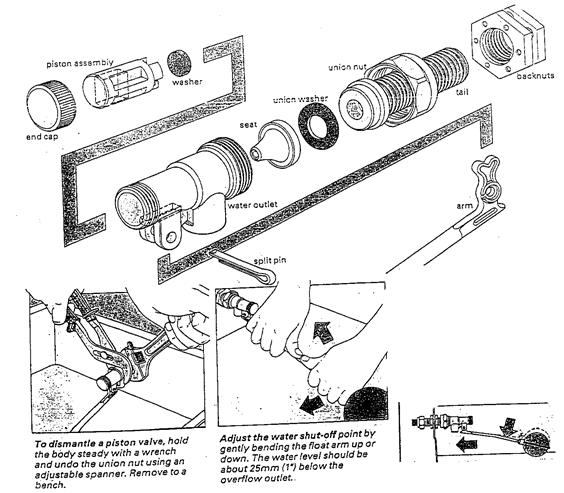
A constant drip from the front of the valve during filling is normal, but if you suspect the diaphragm needs replacing:
Unscrew the front of the valve body.
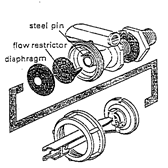
Instead of different size seatings the Torbeck valve comes with a choice of flow restrictors for high and medium pressure. But if the valve takes more than 20 seconds to fill, it’s more likely that the filter is blocked so check this first. (Early models may not have a filter).
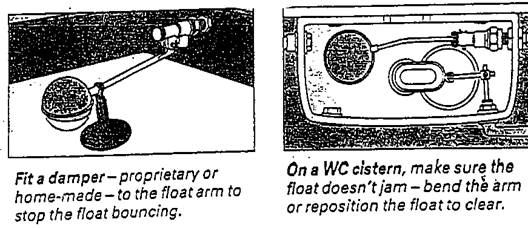
New ball valves aren’t expensive, so if you can’t get the parts to repair the old one (or it isn’t worth repairing) then buy a matching replacement. Replacing the entire valve is likely to cause problems, so aim to ‘graft’ the working part of the new one on to the tail of the old one so that you don’t have to disturb the supply pipe. Make sure you fit a new sealing washer where the two halves join.
If you have to replace the entire valve, or you are changing it for another type:
Before you start, apply some penetrating oil to the connector nut and valve backnuts. Then, after turning off the water, open a tap lower down in the system to drain any water left in the supply pipe. New valves are often supplies with self-sealing nylon backnuts which don’t need washers, but make sure the area around the nuts is clean and free of old jointing compound so that the seals are watertight. On a WC, don’t overtighten the nuts.
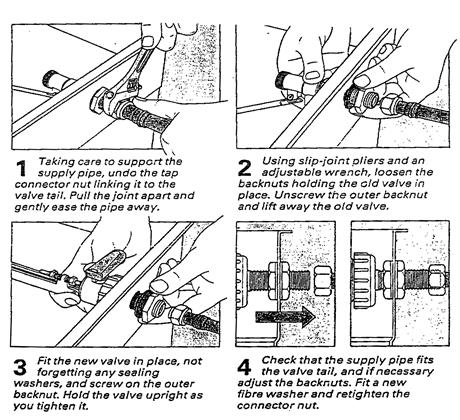
“Some modern WCs require a bottom entry valve, which includes an integral standpipe. Valve operation is identical to the usual side-entry type.
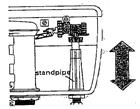 If you’re fitting an identical replacement, you should be able to leave the standpipe in place and simply undo the valve at the union. Otherwise, be sure to quote the length of the standpipe when ordering a new valve.”
If you’re fitting an identical replacement, you should be able to leave the standpipe in place and simply undo the valve at the union. Otherwise, be sure to quote the length of the standpipe when ordering a new valve.”
Bridging the gap
If you can’t get a new valve to match up to the existing supply pipe, don’t force the pipe it may cause the joint to leak, or weaken others along the run.
Normally, adjusting the position of the backnuts on the valve tail gives you enough room to manoeuvre. Failing this, you may find that a screw-on tap shank adaptor is long enough to bridge the gap. Otherwise, you have no option but to saw off the old tap connector and fit a new one, together with a new section of pipe.
Persistent valve problem
The Keraflo valve is a patented design which uses ceramic discs instead of washers to shut off the water. It is only made to fit WC cisterns, but is claimed to be maintenance free and very reliable.
The valve comes in a basic unit to which you add a side entry connector or a separate standpipe for bottom entry. The fitting procedure is the same as for other ball valves, but you may need an extending arm if the flushing handle restricts the float travel.
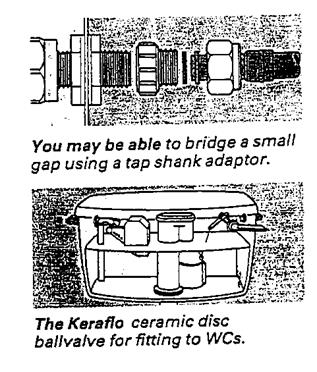
Volume of Rectangular Cistern: Length (M) X Breadth (M) X Height (M)
The answer will be in cubic metres M³
Capacity of Rectangular Cylinder: L (M) X B (M) X H (M) X 1000
The answer will be in litres
To calculate the length of the circumference of a circle: π D
To calculate the area of a circle: π R²
Volume of a cylinder: πR²H = M³
Capacity of a cylinder: πR²H X 1000 = Litres
Intensity of Pressure: Head (M) X 9.8
The answer will be in Kn/M²
Total Pressure: Intensity of pressure X area acted upon
The answer will be in Kn
Quantity of heat energy = Mass (Kj) X specific heat X temperature rise
The answer will be in Kj
Power = Kj the answer will be in Kw
Seconds
Derived units are those which can be expressed in terms of primary units so as to provide more units to work with.
1 Litre of water weighs 1 Kg
1000 Kg = 1 metric tonne
1 cubic metre of water holds 1000 litres and weighs 1 tonne
The boiling point of water = 100ºC = 373ºK
The freezing point of water = 0ºC = 273ºK
The maximum density temperature of water = 4ºC
Absolute zero = 0ºC = -273ºC
The specific gravity of water = 1
Specific gravity may be defined as the ratio of the weight of a given volume of any substance to the weight of the same volume of water at 4ºC.
An alloy is a metallic substance made by mixing two or more elements, one of which is a metal.
Newton was a genius. There is no doubt that his discoveries have become the foundations of modern science. Yet Newton, like all of us, experienced human sufferings and failings. Early in his life, he developed feeling of insecurity and rejection. These fears together with a fear of the unknown spurred him on to learn the laws of nature as he felt God had written them. The precision of his mathematical proofs gave him assurance and comfort. Those proofs and ideas, however, did not spring full-grown from his forehead, but rather were nurtured through tortuous periods of development. Newton had much difficulty relating to his colleagues and unfortunately was involved in several spiteful disputes. In later life, his autocratic domination of London’s scientific community brought him some final satisfaction, but even then he seemed to be a man of little mercy and much spite.
Isaac Newton was born prematurely on Christmas Day in 1642. His mother used to remark that he was small enough to fit into a quart pot. Newton’s father was a common yeoman in Lincolnshire and died before his son was born. When Isaac was about three, his mother married a local pastor and moved a few miles away, leaving young Isaac in the care of the housekeeper. Newton hated his stepfather for taking his mother away.
Isaac was a small child who was forever being bullied by other children. He was required to help on the farm, but slipped off as much as he could to read. In his leisure he amused himself building model windmills powered by mice, waterclocks, sundials, and kites carrying lanterns which frightened the country folk. It was said that he had the hand of a carpenter as well as the head of a mathematician. A local schoolmaster recognised Newton’s abilities and helped send him to Cambridge.
In 1665, the bubonic plague was raging through the English countryside and consequently Cambridge went into recess. At about the same time there was a great fire which destroyed much of London. Many were beginning to feel it was the end of the world. Amid all the turmoil, Newton, now 23, returned to the family farm to study. From his concentration, he developed a theory of coloured light and his theory of fluxlops (calculus). While sitting in his garden, he dreamed up the proof for the law of gravity. This was a marvellously creative time for Newton. As he explained, “I keep the subject constantly before me and wait till the first dawnings open slowly by little and little into the full and clear light”.
Much of Newton’s life was spent in seclusion. He lived an ascetic life, dressed sloppily and rarely went to bed before two or three in the morning. He hated weeks in his garden and was inveterate hypochondriac. There was little laughter in his life and he never married. Newton was an avid follower of the Bible and as he conducted his experiments, it was as though he was wrestling with an evil force. His studies even took him into alchemy.
A large part of Newton’s life was spent quarrelling with fellow scientists. Robert Hooke accused Newton of stealing some ideas about gravity and light. This touched off dispute which lasted for years. Newton usually responded badly and tended to feel he was omnipotent. Leibnitz was another rival. Unfortunately, both Newton and Leibnitz developed calculus at about the same time. Both claimed priority and another dispute was born.
Water pressure is naturally caused by the weight of water which, under the influence of the earth’s gravitational force, exerts pressure on all surfaces which it bears. The higher a column or HEAD of water, the more pressure is exerted at its lowest point. Therefore, it is essential to install feed and storage cisterns as high as possible, giving a good pressure at the draw off points.
The basic unit of pressure or force in the SI system is the Newton. Its name is derived from the 17th century scientist, Isaac Newton. The numerical value of the Newton is very small, and it is therefore more convenient to multiply it by 1,000 so it becomes the kilonewton. So 1,000 newtons = 1 kN
Intensity of pressure may be defined as that force created by the weight of a column of water acting on 1m².
Intensity of pressure = Force
Area
Since force is expressed in kilonewtons and area is expressed in m²
Intensity of pressure = kN
m²
Imagine a cube of water measuring 1m X 1m X 1m, that is 1m³. This is 1,000 litres, and since 1 litre weighs 1kg:
1,000 litres weighs 1,000 kg
Source: http://local.ecollege.ie/Content/APPRENTICE/liu/Plumbing_notes/Water_Supply_M2_U8.doc
Web site to visit: http://local.ecollege.ie/
Author of the text: indicated on the source document of the above text
If you are the author of the text above and you not agree to share your knowledge for teaching, research, scholarship (for fair use as indicated in the United States copyrigh low) please send us an e-mail and we will remove your text quickly. Fair use is a limitation and exception to the exclusive right granted by copyright law to the author of a creative work. In United States copyright law, fair use is a doctrine that permits limited use of copyrighted material without acquiring permission from the rights holders. Examples of fair use include commentary, search engines, criticism, news reporting, research, teaching, library archiving and scholarship. It provides for the legal, unlicensed citation or incorporation of copyrighted material in another author's work under a four-factor balancing test. (source: http://en.wikipedia.org/wiki/Fair_use)
The information of medicine and health contained in the site are of a general nature and purpose which is purely informative and for this reason may not replace in any case, the council of a doctor or a qualified entity legally to the profession.
The texts are the property of their respective authors and we thank them for giving us the opportunity to share for free to students, teachers and users of the Web their texts will used only for illustrative educational and scientific purposes only.
All the information in our site are given for nonprofit educational purposes